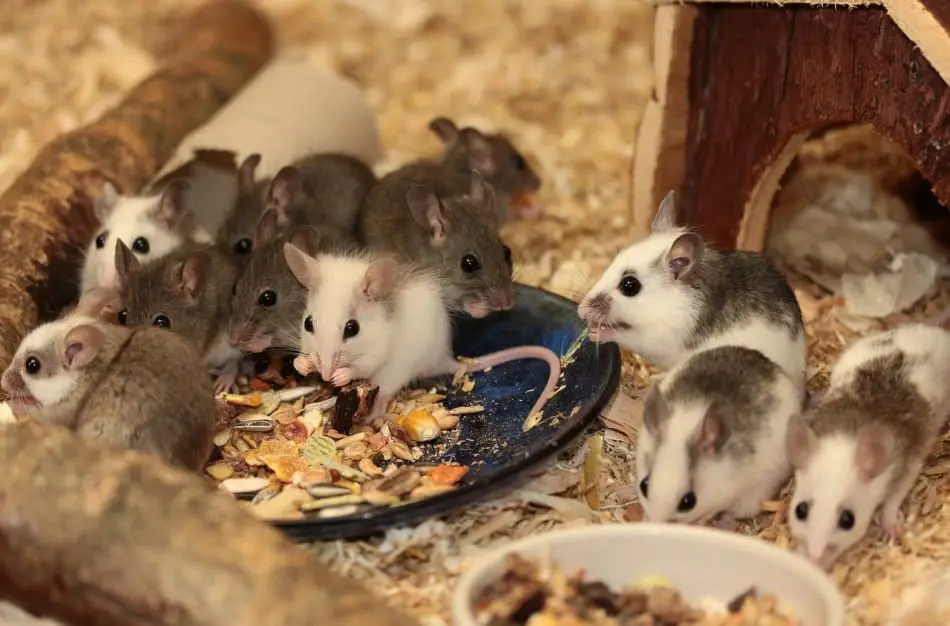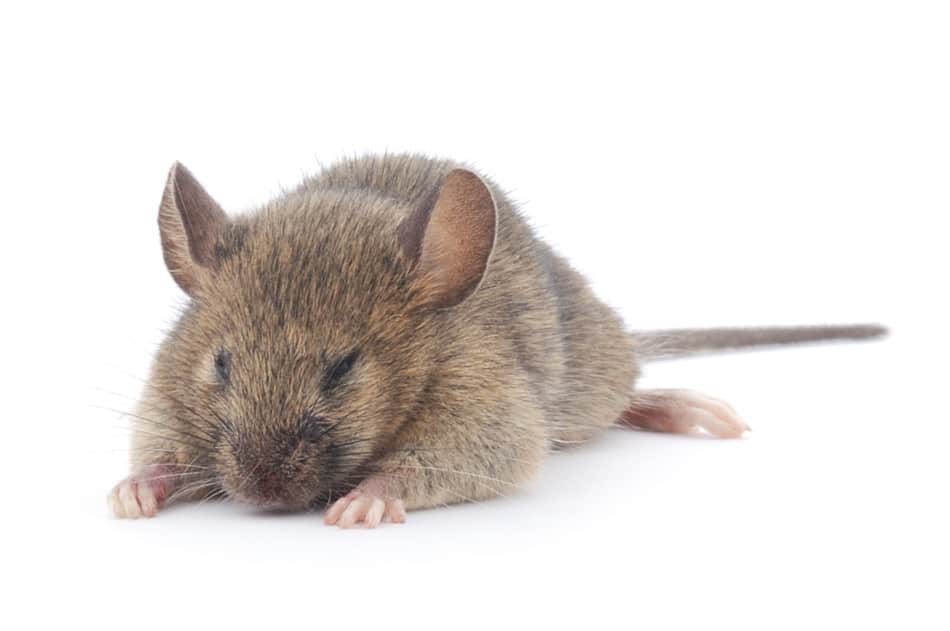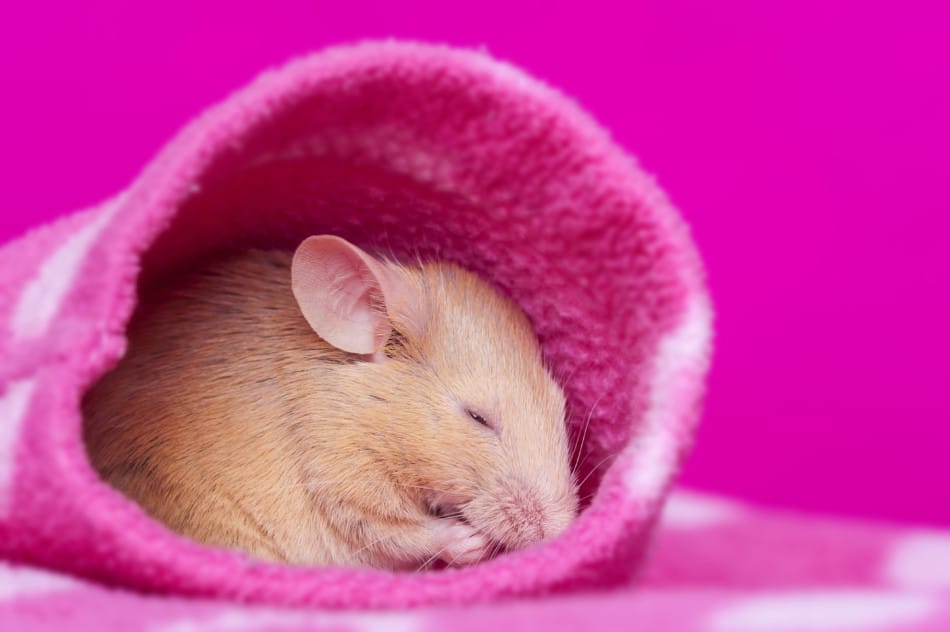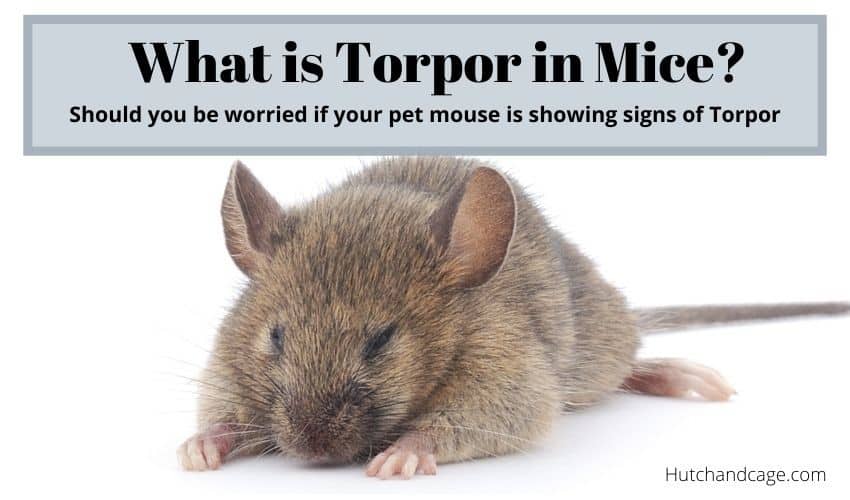You doubtless know that some animals hibernate. Lesser-known is the ability of some animals to go into torpor. This is a ‘deep-sleep,’ much like hibernation, but short-term. What is torpor in mice? We’ll explain!
Some animals will go into torpor as much as a few times today. The purpose of torpor is to allow animals to conserve: energy, fat, warmth, and the like. Mice are one of the animals that go into a torpor frequently. Indeed, it is largely this ability that allows them to survive.
What is Torpor? This is a deep sleep similar to hibernation but can last for shorter periods of time. Your Pet Mouse will go into Torpor when there’s an issue. It has been known for mice not to wake up from Torpor.

Table of Contents
How Does Torpor Work?
Specifically, torpor is a process that entails the lowering of the heart and respiratory rate of an animal. This causes their body to fall into a sort of deep sleep, similar to hibernation.
A torpor, however, will only last a brief amount of time. For some animals, like the mouse, torpor serves as a daily function. Mice and certain other animals will use torpor to survive.
This is because the state of torpor causes the metabolism to drastically slow. An animal in a torpor will not burn nearly as much energy as they would if they were simply sleeping, or awake.
There are several reasons an animal might need to store energy. For example, some birds go into torpor before migration. They rest and muster their resources for long, arduous travel. This greatly increases their chances of getting to their destination alive (and well).
The process of coming out of torpor can take most animals up to one hour. To emerge from torpor, the body will begin to have muscle contractions and shake. Once they have recovered, an animal waking from a torpor will benefit from renewed energy and drive.

What Causes Torpor In Mice?
So, what, then, causes torpor in mice? There are a few key things that might cause a pet mouse or any mouse for that matter to go into this state. The first is how much food there is.
When food becomes scarce, the body of a mouse may decide to go into torpor to survive. The torpor allows their body to hold onto fat rather than burn it as fuel.
Between states of torpor, the mouse may venture out to see if time has improved their fortune. When food becomes available again, they will promptly forage, and remain awake.
The next biggest trigger of torpor in mice is the ambient temperature. Mice will go into torpor to conserve warmth when this drops too low. Some other factors that can contribute are stress, injury, and the like.
When Do Mice Sleep?
If you have a pet mouse, you probably know that they are nocturnal. These little guys can sleep up to 5 hours a day. Nighttime is when they are the most active.
Of course, in order to sleep, mice must be nice and cozy. A mouse is no happier than when they are safe and well-fed in their burrow. You can replicate this environment at home. This will give your pet mouse a safe place to torpor, nap, or sleep at their leisure.
Perhaps the biggest gift that we can give our pets is helping them feel secure. You can do this by picking a sturdy metal cage and providing a small mouse house. A mouse will also need bedding that is springy and comfortable.

Aspen shavings are perhaps the best mouse bedding out there. They are allergen and toxin-free.
You can purchase a little mouse house for the cage online, or make one yourself.
What is the Difference Between Hibernation and Torpor?
Hibernation appears to be a choice, and habitual. Torpors are triggered by external stressors, and they do not seem to be a voluntary state.
Most animals never leave the general area in which they were born. This means that they are accustomed to certain changing seasons, temperatures, weather, and so on. As a result, animals have learned to follow their hibernation cycle like clockwork. They hibernate in the wintertime.
In contrast, torpors can happen at any time. They are induced by ever-changing variables, like food, mates, and more. Torpors can also occur often. Some animals, like mice, will have a nice, restful torpor as a regular part of their daily routine.
A torpor seldom lasts more than an hour or two, and then the animal in stasis will awake. Hibernation, on the other hand, lasts weeks, to months, to a whole season.
What Other Animals Experience Torpor?
There are several animals that experience torpor as a natural state! Hummingbirds, for instance, go into a torpor every day. This makes sense, as their ever-active bodies tend to burn a lot of energy!
For them, going into torpor is the perfect way to conserve. Otherwise, hummingbirds would have to feed all day! They search out nectar nearly the entire time that they are awake. A torpor provides a much-needed break.

Other birds, like chickadees, go into a torpor prior to migration. This allows them to bolster themselves for the journey. Doves, on the other hand, go into torpor to keep warm.
A torpor is something that even some marsupials utilize. Bats will go into torpor as well. They do this for a particularly unique purpose! The torpor serves as a sort of parasite resistance. This torpor is key in preventing them from being overcome.
As you can see, for all animals, torpor is not a choice but a necessity. This physiological reaction enables them to survive.
What Animals Hibernate?
As touched on above, hibernation is quite similar to torpor, but long-term. There are many animals that hibernate! This could be considered a somewhat common practice, especially in the Northern climate.
The best-known hibernator is the bear, of course! These are typically the first animal we think of. Bears hibernate an impressive 5-7 months, going without food or water for all of this time. They emerge in the spring when the weather is kinder and the prey more plentiful.
Skunks also hibernate. Actually, what skunks experience seems to be somewhere between hibernation, and torpor. In the winter, they can survive on their stores of fat and are mostly inactive. They do however wake up once in a while to venture forth. This makes them rather unusual.
Squirrels will also become largely inactive in the wintertime. Groundhogs are another. These famous little guys are known to emerge when spring is in the air. Unless they see their shadow!
Turtles hibernate 2-4 months, in from Winter to Spring (Nov-Feb, roughly).
Bees hibernate deep underground, to awake once there are flowers once more.

Snakes experience something quite similar, which is called brumation. This is when they retreat from temperatures that are excessively cool. They cause their heart rate and respiration to slow.
Fish do not hibernate, but when the water freezes over, they do slow down a great deal. They are not dead, but simply in a hibernation-like stasis until it is again warm enough for them to move.
Some Animals Experience Estivation
Have you ever heard of estivation? This is, in a way, the opposite of hibernation. When they estivate, animals are going inactive to escape weather than is excessively warm. Some animals, like the hedgehog, will both hibernate and estivate depending on the temperature.
Other animals that estivate include snails, crocodiles, lungfish, birds, tortoises, and more.

Clearly, some animals cannot dig underground. Crocodiles, for example, will find a hole under a log, a burrow, or another shelter that is already there. Birds do the same. Animals that estivate find an area that is cool and then become inactive.
You have probably seen a snail estivate. They require a very moist environment naturally. When conditions become dry, they retreat behind a shield of mucus into their shell. They can remain this way for up to 3 years, and until conditions improve.
Read: 7 Reasons to keep pet mice-Pros & Cons
Conclusion: What Is Torpor In Mice?
So, as you can see, for some animals, torpor is of great importance! This ability allows them to survive in situations that are no longer livable. And emerge once it is wise.
Mice use torpor to wait until food sources are more readily available, the weather warms up, and more. This way, when they awake, they have a much higher chance of survival and a better quality of life.





